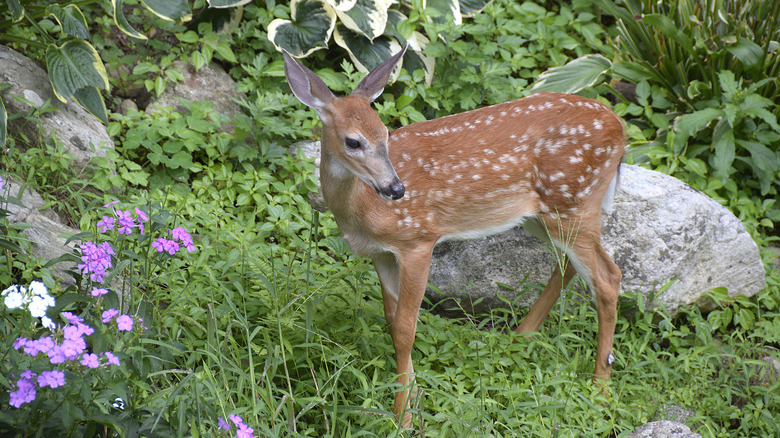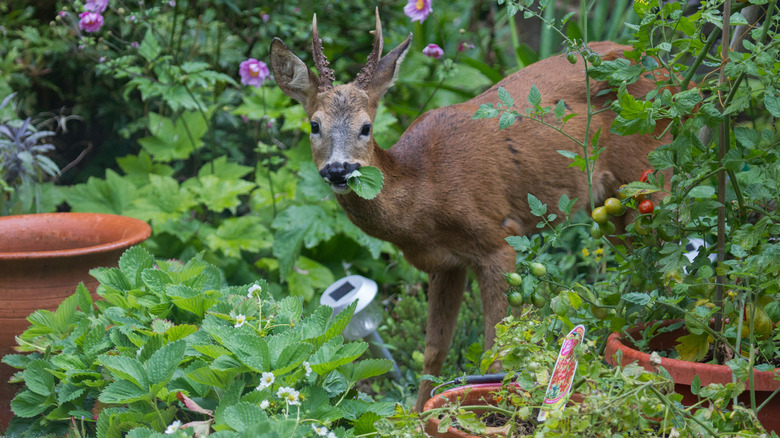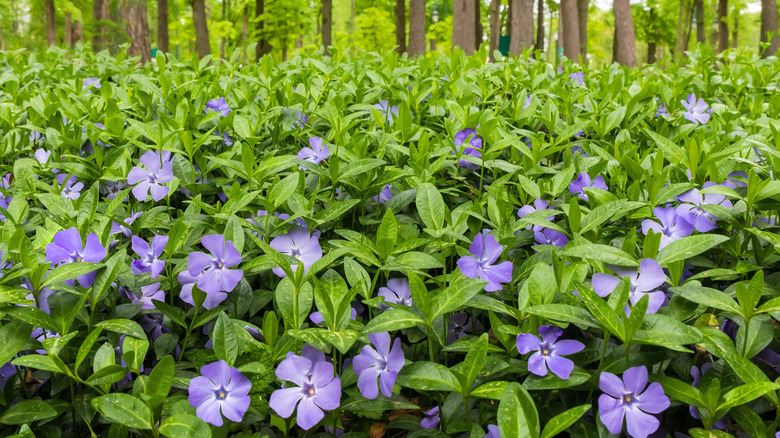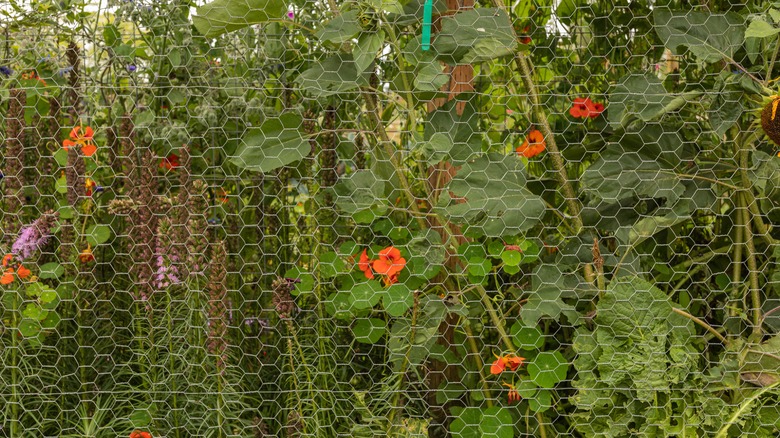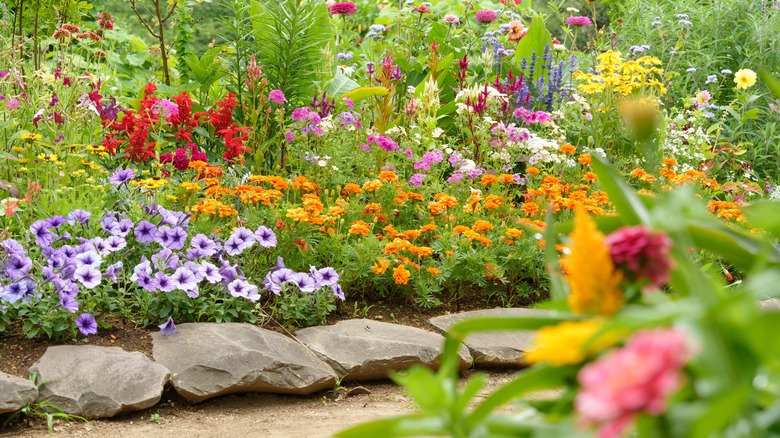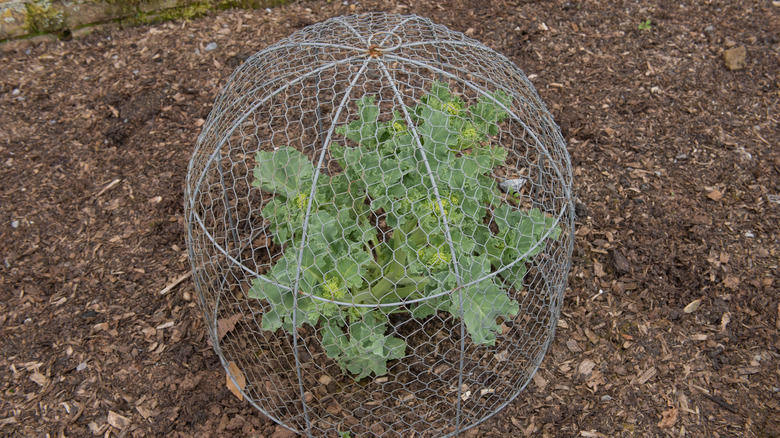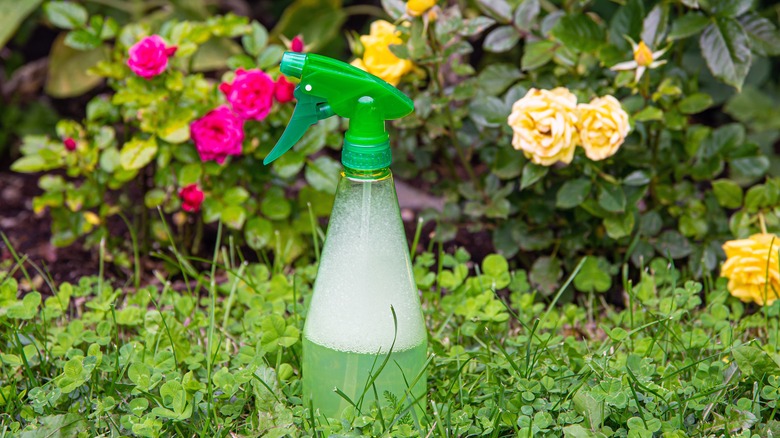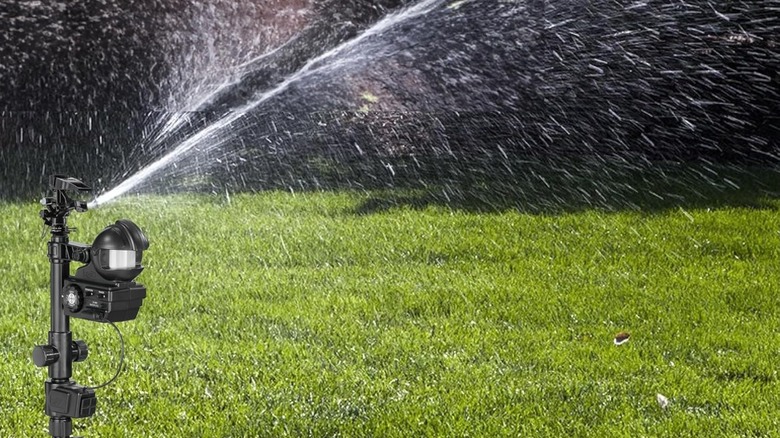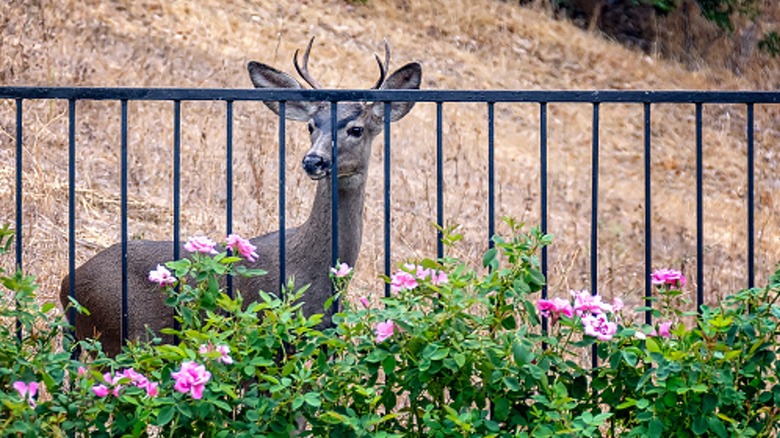8 Tips & Tricks To Prevent Deer From Eating Your Fall Flowers
We may receive a commission on purchases made from links.
Whether you're an avid gardener with a fully landscaped lawn or only have a few pots on your porch with some of your favorite fall flowers, you don't want unwelcome guests turning your plants into their snacks. While several pests may visit your garden in the fall, you'll want to be particularly aware of deer. This is especially true when you live in an area where there is an overpopulation problem or if you live close to the woods or another natural habitat.
Deer damage to fall flowers and plants is no joke. Because these mammals do not have upper incisors that would allow them to neatly chew off the buds or leaves they want, they have to use their mouths to tear off the parts of the plant they want to eat. This results in shredded leaves and stems, jagged edges, and just an overall sad appearance — something no gardener wants to see happen to their flowers and plants. While keeping deer out of your yard isn't always easy, there are some steps you can take to protect your plants and minimize the damage that does or bucks can inflict on them.
Act quickly to make sure deer don't develop a habit of munching on your flowers
When you notice signs of deer damage to your fall flowers and other plants, be ready to spring into action. You want to begin implementing a strategy as quickly as possible. Otherwise, the deer are going to continue munching on your flowers. Beyond the additional damage this will do to the plants, the deer will also start developing the habit of returning to eat your plants. Just as it is more difficult for us to break a bad habit, the same is true of deer. They tend to come back to the same places to eat. So, once they've decided that your garden is a good spot to go for a snack, it is going to be all the more challenging to keep them away.
Even better than acting to address a deer issue after it arises is being proactive. Consider implementing some of the tips and suggestions below before you lose even a bud or a leaf from a favorite flower to a hungry deer.
Choose deer-resistant flowers
Sadly, there are no such things as completely deer-proof plants. If deer are hungry enough, they'll eat anything they can get. When there are a lot of deer in an area, it can be more challenging for these animals to find the 7 to 10 pounds of food they need every day, so they'll sacrifice taste for sustenance. However, there are certain plants that are much less attractive to deer than others. If "better tasting" options are available in other places, they might leave your flowers alone. A few plants that may help keep deer away from your garden include vincas, catmint, anise hyssop, and autumn crocuses.
Similarly, think twice about adding certain plants and flowers if you already know you have a deer problem. Hostas, chicory, and winter creepers are a few of their favorite fall foods. You can protect your garden by keeping it free of some of these plants that are known to attract deer.
Install fencing around your garden
If you can't seem to keep deer out of your garden, you could consider installing a fence around it — or your entire yard. There are different types you can try. If you want a short-term solution that you can remove once you feel you've reduced the deer problem at the start of winter, then an affordable type of fencing like mesh or chicken wire may be sufficient. These materials are also more flexible and easier to install than permanent structures.
You can also consider installing an electric fence, as long as you aren't worried about pets or children walking through it and there are no restrictions or laws against them in your area. If you do install an electric one, be sure to use flags or other markings to identify where the fence starts so as to warn neighbors and other people. After you've set it up, you can try using a little bit of peanut butter or something else that deer enjoy to attract them to the area. Once they receive an initial shock, they'll be less likely to return to the spot.
If you choose to install any type of physical fence, keep in mind that deer can potentially jump over barriers up to 10 feet tall. Installing one this tall likely isn't feasible, but you can still use a fence to deter them from your garden. Generally, deer won't jump over a fence if they're unable to see a spot to land. So, pairing a fence with covers for your flowers or raised beds can discourage them from trying to enter your garden.
Be purposeful with plant placement
As you're plotting out your garden, be purposeful about where you put each plant. Your goal is to make it as unappealing to deer as possible, encouraging them to look for food elsewhere. If you really want to keep hostas, tulips, geraniums, or other flowers that deer really enjoy, you'll want to be very careful about how you lay out the space.
Place the flowers and other plants that are most attractive to deer in the sections of the garden where there is more likely to be human activity — such as closer to your front door, the road, or other areas where you spend a lot of time. Similarly, place less attractive plants closer to the deer's natural habitat or the areas where they'll likely be approaching your yard from. This way, they'll spot these plants first, and may turn around. You can also try surrounding the plants that the deer like with those they don't enjoy as much. Doing so can also discourage them from munching.
Place wire cages around vulnerable plants
If you only have a few smaller plants that the deer are munching on, you may not want to invest the time or money to install a fence around your entire yard or garden. Instead, you can consider placing wire cages around the vulnerable plants as an alternative solution to keep the deer away. Wire cages will block deer from chewing on the leaves or flowers — as long as they are wide enough that no parts of the plant are growing through the grid.
Constructing your own wire cages with some mesh or chicken wire is a relatively simple DIY task. Alternatively, you can purchase pre-made cages like the Dukelai Chicken Wire Cloche Plant Covers or Boldwords Garden Cloches. Just be sure to choose a model with a closed top (or add a top if you're making your own). While products that have an open top may work to deter rabbits and other smaller critters from munching plants, deer could simply dip their head down through the opening and continue to eat your flowers.
Try a deer repellent
As their name suggests, deer repellents are designed to repel deer and discourage them from tasting your plants. They may have a putrid odor or taste that deer do not like, and once they smell and/or taste them, they will be more likely to want to stay away from the area to avoid experiencing it again. Remember, nothing is 100% effective when it comes to keeping deer away from a garden, especially if numbers are high or food is scarce, but making your garden less appealing than other nearby plants can help.
You can try making a DIY deer repellent using two ingredients that you probably have in your kitchen right now. All you'll need is a few eggs and some water. Combine one gallon of water and three eggs (blended first in a blender with a little water). Then, strain the solution, add it to a spray bottle or a hand sprayer, and apply it to the affected plants in your garden. You'll want to spray the plants until the leaves are visibly wet. Aim to reapply the solution about once every two weeks or after a rainstorm. As the egg mixture sits outside, it begins to putrefy, and the harsh odor repels most deer away.
There are also commercially available repellents that you can spray around your garden or on the specific plants that the deer seem to enjoy. The Bonide Repels-All Animal Repellent spray is one example. Its putrid aroma and taste discourage deer — and other animals — from eating plants in the garden. The biodegradable formula provides protection for up to two months.
Use a motion-activated sprinkler
Setting up a motion-activated sprinkler is another strategy you can use to keep deer away from your fall flowers and plants. Motion-activated sprinklers — like the Orbit Yard Enforcer Motion Activated Sprinkler — automatically spray water whenever they detect movement. An abrupt stream of water will startle deer and make them want to leave the area, preventing them from nibbling on your plants.
There are a few considerations to keep in mind before you set up a motion-activated sprinkler in your yard. First, if you have children, pets, or other welcome guests that use your yard, you'll need to remember to warn them about the sprinkler's location or turn it off when they're present. This can make the device a bit less convenient. Next, while sprinklers can be effective initially, they do not always produce lasting results. Deer may get used to the shot of water and learn how to avoid getting sprayed over time. However, if you're looking to buy some time as you implement other solutions, a sprinkler could be a good short-term solution.
Be realistic and flexible by utilizing more than one strategy
One of the most important things to remember when you're trying to keep deer away from your plants is that nothing is going to work 100% of the time. As we've mentioned, deer will eat practically anything if food is scarce or when there is an overpopulation and more animals competing to eat. For this reason, it is important for you to keep your objectives realistic. It is unlikely that you will be able to completely prevent deer from touching your garden and plants. However, you could aim to significantly minimize the damage they do. Cutting this damage even in half would show that the strategies you employed were effective.
Because nothing is going to be 100% effective, it is also important to be flexible as you are trying new approaches. If a DIY garden fence isn't effective by itself, add on an additional strategy, such as replacing existing fauna with deer-resistant shrubs for your yard. Implementing multiple strategies, instead of relying on just one, is likely to deliver the greatest success rate.
